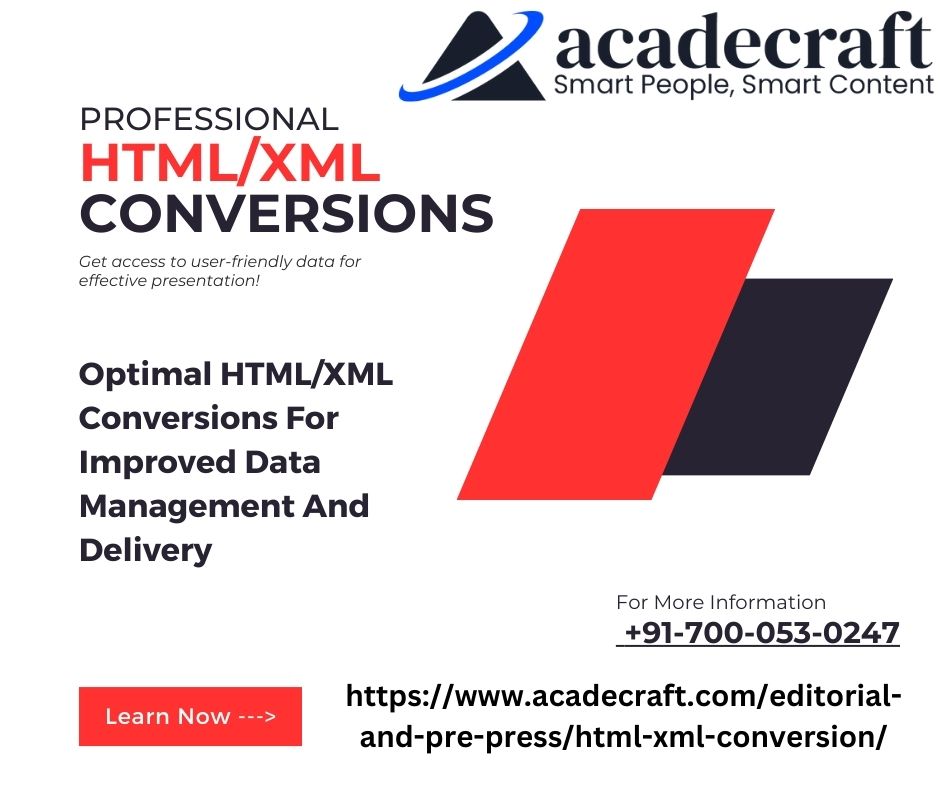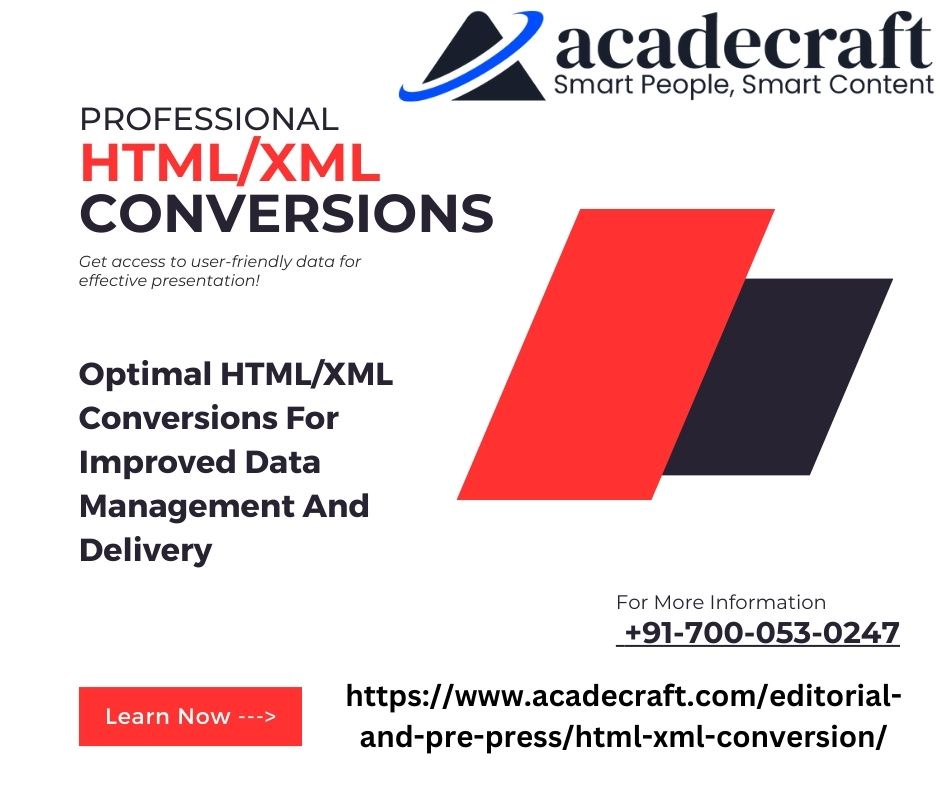The need for seamless data interchange is most important. As businesses strive to enhance their online presence and streamline data management, the conversion from HTML to XML has emerged as a crucial aspect.
In this article, we will delve into the intricacies of HTML to XML conversion services, exploring what they entail and why they matter.

The Basics: HTML vs. XML
Before we plunge into the realm of conversion services, let's establish a foundational understanding of HTML and XML. HTML, or HyperText Markup Language, is the language of the web, defining the structure and layout of web pages. On the other hand, XML, or eXtensible Markup Language, is a versatile markup language designed to store and transport data.
Why Convert from HTML to XML?
HTML to XML conversion service is often driven by the need for structured and standardized data. While HTML is adept at presenting information on web pages, it may lack the precision and flexibility required for efficient data exchange between systems. XML, with its tag-based structure, allows for the creation of customized data formats, fostering interoperability and data consistency.
Key Benefits of HTML to XML Conversion Services
- Data Standardization
HTML to XML conversion services facilitate the standardization of data formats. This ensures that data is presented uniformly across different platforms, minimizing inconsistencies and compatibility issues.
- Interoperabilit
XML's inherent flexibility makes it an ideal choice for fostering interoperability. By converting HTML to XML, businesses can ensure that their data can be seamlessly exchanged and integrated with diverse systems and applications.
- Improved Data Management
XML's ability to represent hierarchical relationships within data makes it an efficient tool for managing complex datasets. Converting from HTML to XML allows for more effective organization and retrieval of information.
How HTML to XML Conversion Services Work
The conversion process involves transforming HTML documents into XML format while preserving the structure and content. Specialized tools and algorithms are employed to identify HTML tags and attributes, mapping them to corresponding XML elements. This meticulous process ensures that the resulting XML retains the integrity and semantics of the original HTML.
Choosing the Right HTML to XML Conversion Service
Selecting the appropriate conversion service is a critical decision for businesses aiming for a smooth and error-free transition. Consider the following factors when evaluating HTML to XML conversion services:
- Accuracy and Precision
Look for a service that guarantees accurate conversion, preserving the data's integrity and structure. Precision is key to ensuring that the converted XML meets the specific requirements of your data model.
- Customization Options
Every business has unique data needs. Opt for a conversion service that allows for customization, enabling you to tailor the XML output according to your data schema and organizational requirements.
- Scalability
As your business grows, so does your data. Choose a conversion service that can handle large volumes of data efficiently, ensuring scalability and consistent performance.
Common Challenges in HTML to XML Conversion
While the conversion process is designed to be seamless, challenges may arise. Being aware of these challenges can help businesses navigate the transition more effectively:
- Complex HTML Structures
HTML documents with intricate structures may pose challenges during conversion. Choose a service equipped to handle complex HTML layouts and nested elements.
- Data Loss
In some cases, improper conversion may result in data loss. It is imperative to choose a conversion service that prioritizes data integrity and offers thorough testing procedures.
- Compatibility Issues
Ensure that the converted XML is compatible with the systems and applications you intend to integrate with. Compatibility issues can hinder the seamless flow of data between platforms.
Future Trends in HTML to XML Conversion
The demand for efficient data conversion solutions is likely to intensify. Future advancements in HTML to XML conversion services may bring forth innovations such as artificial intelligence-driven conversion algorithms, further enhancing accuracy and speed.
Additionally, the integration of seamless data validation processes within conversion services is anticipated. This will play a pivotal role in ensuring that the converted XML data adheres to industry standards and remains error-free.
As businesses continue to embrace the transformative power of data, staying abreast of these evolving trends will be essential for making informed decisions and maximizing the benefits of HTML to XML conversion services.
Conclusion
In the dynamic landscape of digital business, the ability to harness and exchange data seamlessly is a competitive advantage. HTML to XML conversion services play a pivotal role in this process, enabling businesses to standardize data, enhance interoperability, and improve overall data management.
As you embark on the journey of HTML to XML conversion, prioritize accuracy, customization, and scalability in your choice of conversion service. By understanding the nuances of the conversion process and being aware of potential challenges, you can make informed decisions that contribute to the efficiency and success of your data management strategies.


No comments yet